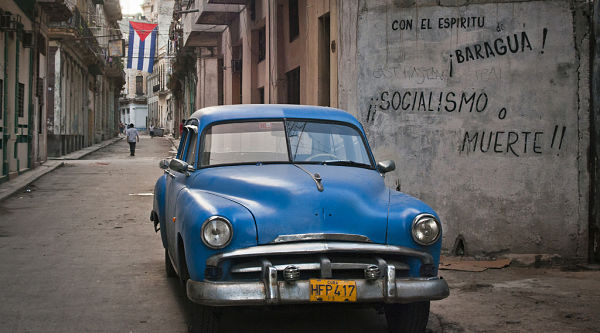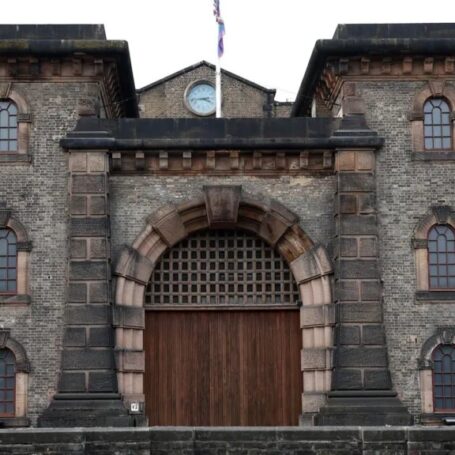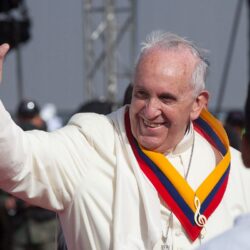Change in the Caribbean?

(Photo: Matias Garabedian/Flickr. CC BY-SA 2.0).
Recently, I spent a week in Cuba touring the Western part of the island. We began in Cienfuegos, then went to Trinidad, Santa Clara, Playa Chiron and Playa Larga (both beaches on the Bay of Pigs), and ended with four days in Havana. Under U.S. Department of Treasury regulations we were still on a “People-to-People” tour, which meant we met with many Cubans who were anticipating significant change, if not in the immediate future, somewhere down the road, perhaps three to five years.
As the news has reported, there is still some hard negotiating between the two countries to fully implement many of the hoped-for changes. For Cuba, the most important issue of the moment is to have its name removed from the State Department’s list of state-sponsored terrorism. There is also a strong desire that the American trade boycott end. The Cubans are particularly bothered by the secondary impacts of the boycott – trading with Cuba by overseas companies precludes their trading with the U.S.
For the most part, Cuba remains poor. Rural and urban poverty are very visible. Horse-drawn carriages remain a significant part of the transportation system and oxen-pulled plows are still part of the agricultural system. Housing stock in old Havana is crumbling and a major restoration effort is underway. Cuba imports much of its oil from Venezuela and there is concern about the political situation there creating shortages. America automobiles from the 1950s make up most of the taxi fleets.
The pull out of the Russians after the collapse of the Soviet Union and the collapse of the sugar cane industry in the early 1990s led to what the Cubans call the “special period,” when the people faced starvation and other deprivations. It got so bad that the U.S. government allowed agricultural and medicinal products to be sent to the island despite the boycott.
Yet, there is a new Cuba emerging. The economic reforms implemented in the mid-1990s allowed for the beginnings of privatization. Our last meal in Havana took place in the oldest private restaurant in the city. It opened in 1994 under significant restrictions, with three tables and twelve people, but was now a thriving enterprise that could serve close to 100 people. In addition, we met with a couple who had turned their home into a bed and breakfast that now attracted tourists from all over the world (and soon Americans, the couple hoped) and was highly rated on Trip Advisor.
With salaries for most professions continuing at a paltry level (the government was forced to double pay for doctors to try and keep them in Cuba), the tourism industry has become the path to the middle class. An instructor of philosophy at the Havana University that we talked with was completely frustrated by his situation and made ends meet by working with tourists and other opportunities. Another private restaurant owner began as a professor then became a taxi driver before opening his eating establishment in old Havana, the poorest part of town.
Even with the U.S. restrictions, tourism from the U.S. is flourishing. The tour company we went with is running about 20 trips a month to the island. The anticipation of Americans replacing Canadians as the largest tourist country of origin is great. However, the infrastructure to handle these hordes is quite insufficient. Havana harbor can handle only one cruise ship at a time. This is one of the reasons why Brazil is helping Cuba build a new enlarged harbor at Mariel. One Cuban joked (maybe) about taking advantage of the expected tourist boom by going into the Port-A-Potty business.
One other thing that is quite clear is that music, dance, and the visual arts continue to flourish. We saw performances from young students (aged 8 to 14) at the Benny More School for the Arts, a modern dance troupe that incorporated hip-hop with more classical Cuban styles, and stunning art work from a special co-op that specialized in lithographs to paintings at the Free Enterprise Artisan Market in Havana.
The presence of the Russians is almost completely gone. In the 1960s thru the 1980s Cuban children learned Russian starting in elementary school. Today they learn English. Vladimir Putin made the Cubans build a Russian Orthodox Church (allegedly because there was a Greek Orthodox one), which we were told mainly serves as a place for middle-aged men to meet and practice their Russian. There are still examples of Soviet-style housing stock, but mainly they are on the outskirts of Havana.
Cubans remain proud of their revolutions. Jose Marti is still the national hero and the Cuban-Spanish American War remains an important milestone in Cuban history. The 1959 revolution is very visible with slogans on billboards and signs throughout the country and even in the agricultural markets we visited. Che Guevara’s face is everywhere, even more ubiquitous than the song, Guantanamera, and much more seen than Fidel’s face. Che has a major monument and mausoleum in Santa Clara, site of his famous victory over Fulgencio Batista’s forces. Bullet holes are still visible in the building where the government forces were stationed. Batista, the strongman the Castro revolution toppled, is still reviled. Cubans also take great pride in their health care system, although one person told us that who you know is still important for obtaining emergency treatments.
Political reform, however, seems daunting. Raul Castro has announced that he will step down as president when his current term ends in 2018. His expected replacement is Miguel Diaz-Canel, the current vice president and a 12-year veteran of the Politburo of the Communist Party. He would be Cuba’s first leader born after the revolution took power.
Again, there is great anticipation of societal change. American banks will soon arrive so that U.S. tourists can use credit cards (alas, our trip was all cash). Airlines and hotel chains are chomping at the bit. I asked one of our lecturers how Havana could avoid a future like many other harbor cities, now filled with multi-million-dollar condominiums on the water. He assured me that public spaces would be given precedence, but it seems the lure of capitalism might squash these plans.
The Cubans are wary of going down the road of post-Soviet Russia and the economic problems created there. The China model might also appear attractive, but that is also fraught with problems, as Evan Osnos has described in his award- winning book on China.
So I came back convinced of the truth of our local tour guide’s favorite admonition that things in Cuba are muy complicado. On the other hand, the joy of cruising down the Malecon at night in a 1954 Chevy convertible is hard to beat!

































































































thanks Howard. I will print this so I can remember what we saw, heard and did on the trip. Very well done.
Time to come visit with Marilyn. 703 850 6661.